Roses, these majestic representatives of the garden, are often the unfortunate beneficiaries of our misplaced zeal and sometimes excessive love. Armed with our pruning shears, we dive into battle, generally more prepared for a fight than for a delicate act of care. The irony? The more determined we are to do well, the more our roses seem to cry for help. So, how can we transform this energy into skill? Follow this humorous guide to learn how to fail spectacularly at pruning your roses while subtly discovering the correct methods to pamper them.
Lesson 1: Prune at the worst possible time!
To excel in the art of poorly pruning your roses, timing is essential. Choose the worst possible moment for maximum effect! Summer, under a blazing sun, is an ideal time to stress both your roses and yourself. Imagine: the relentless rays of the burning sun scorching both the freshly cut branches and your neck. The wounds on the roses struggle to heal in the heat, exposing them to diseases and dehydration.
Or even better, opt for winter pruning, preferably during a biting frost. In this case, the icy cold may freeze the fresh cuts, preventing the plant from recovering and compromising its future flowering. The branches may split and become damaged due to the frost.
However, for those who prefer to see their roses thrive, the ideal time for pruning is generally in late winter (around March), just before the growth starts. This period allows the cuts to heal quickly with the arrival of spring, minimizing the risk of diseases. Additionally, pruning at this time promotes good air circulation and adequate sunlight exposure, which is crucial for abundant and healthy flowering. By avoiding extreme weather conditions, you provide your roses with the perfect environment to recover from pruning and start their annual growth cycle in the best conditions.
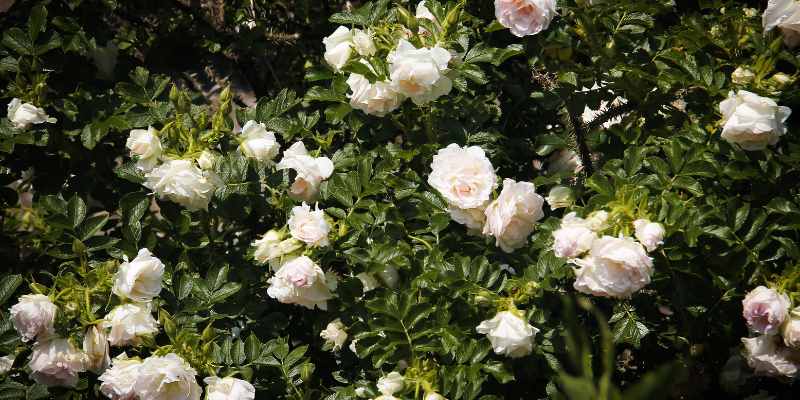
Lesson 2: Create topiary roses!
Transforming your roses into abstract works of art may seem like a fascinating idea for any gardener aspiring to a sculptor's career. Armed with your pruning shears, you tackle these bushes with the ambition to create improbable geometric shapes, bold spirals, or even perfect cubes. This approach, as artistic as it may be, is an excellent way to stress and weaken your plants. Roses, although resilient, do not appreciate being pruned into shapes that defy their nature. They may respond with reduced growth, poor flowering, or even diseases, offended by this attempt to turn them into living sculptures.
On the other hand, if your goal is to cultivate healthy and flowering roses, it is advisable to respect their natural shape. This approach involves carefully observing the rose and understanding its natural habit. Each cut should be thoughtful and aimed at improving the overall health of the plant. This involves carefully removing dead wood, which can harbour diseases and pests. It is also essential to remove weak branches that waste the plant's resources without contributing to its flowering. Additionally, crossing branches should be eliminated to avoid friction that creates open wounds, inviting diseases and infestations.
By following these principles, you promote good air circulation through the bush and ensure adequate sunlight exposure for each branch. This not only helps avoid diseases but also stimulates generous flowering. Pruning, in this context, is not an end in itself but a means to support the plant in its natural expression and optimal health.
A little word from Oli: when I was young (well, I’m still young!), a rose specialist gave me a great piece of advice, along with a mnemonic: "Remember the 4 M's!", she said, "for Malady, Weak, Misplaced, and Dead." This is what should be eliminated first when pruning roses.
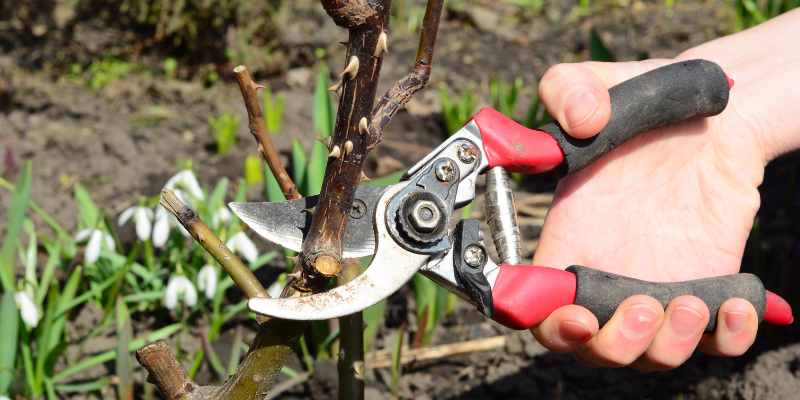
Lesson 3: Tools? Which tools?
To perfect the art of poorly pruning your roses, using inappropriate tools is a must. So grab that old, rusty, and dull pruning shear that’s been lying at the back of your shed. Forget any idea of disinfection or sharpening; after all, the rustier, the better for failing your pruning! This approach, more common than one might think, is the perfect recipe for damaging your plants. A dull tool crushes and tears the plant's tissues rather than making a clean cut, hindering healing and exposing the plant to a higher risk of infections.
Similarly, a rusty tool is not only a danger to the plant but also to the gardener. Rust can harbour bacteria such as Clostridium tetani (which produces the toxin responsible for tetanus), and a dirty tool can easily transmit diseases from one plant to another. This turns every pruning session into a potentially harmful event for your entire garden.
In contrast, a true professional, concerned about the health (and their own!) and beauty of their roses, will always choose a well-sharpened and disinfected pruning shear. A sharp tool allows for a clean and precise cut, reducing stress for the plant and promoting quick healing. Additionally, disinfecting tools between each rose is an essential practice to prevent the spread of diseases. Rubbing alcohol, diluted bleach, or even a simple wash with soapy water are effective methods to keep your tools in optimal condition.

Lesson 4: Prune "haphazardly"
To turn the pruning of your roses into a true random adventure, adopt the "prune in a heap" method. Grab your pruning shear and cut randomly, without trying to identify the eyes, those little growths from which new branches emerge. This method, as imprecise as it may be, almost guarantees a chaotic result. You might remove promising buds or, worse, leave sections of dead wood, disrupting the harmonious development of the plant.
However, for those who wish for healthy growth and abundant flowering of their roses, precision during pruning is crucial. The goal is to stimulate the plant to grow in a balanced and vigorous manner. To achieve this, it is advisable to look for the eyes, which are the potential starting points for new branches. By cutting about 5 mm above an external eye, and at an angle, you encourage growth outward from the rose. This technique helps avoid the development of branches that cross inside the bush, which could hinder air circulation and promote the onset of diseases.
The angle of the cut is also crucial. By cutting at an angle, rainwater flows more easily off the surface of the cut, thus reducing the risk of rot or infection. Additionally, this method ensures that the lowest part of the cut is on the side opposite the bud, protecting the bud from standing water.
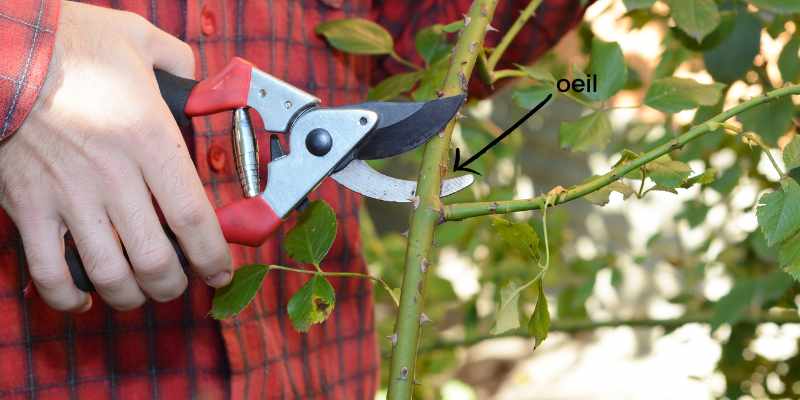
Lesson 5: Treat all roses the same way!
To ensure a total fiasco in the pruning of your roses, treat them all indiscriminately, whether they are climbing, bush, or standard roses. Adopt a uniform approach, disregarding their unique characteristics or specific needs. This method is ideal for confusing and compromising the natural growth of each variety. A climbing rose treated like a bush may end up with inhibited growth, while a bush rose pruned like a climber could lose its compact and attractive shape.
However, for gardeners wishing to cherish and enhance each type of rose, it is crucial to recognise and respect their specificities.
Climbing roses: These roses require a delicate approach. They produce their flowers on the shoots of the previous year. Thus, pruning mainly involves removing old wood after flowering and guiding new shoots to maximise sunlight exposure. Prune lightly to maintain the desired shape and encourage flowering along the length of the stems.
Bush roses: Bush roses benefit from more severe pruning to encourage vigorous growth and abundant flowering. Pruning should be done in late winter, removing about a third to half of the previous year's growth. This promotes the development of new flowering stems and maintains a dense and well-formed bush.
Standard roses: These roses, grafted onto a trunk, require careful pruning to maintain their elegant shape. Pruning should enhance their "ball" shape by removing unruly shoots and balancing the crown. It is also important to remove suckers (vigorous shoots that grow on the trunk or at the base of the rose) to prevent them from diverting nutrients from the upper part.
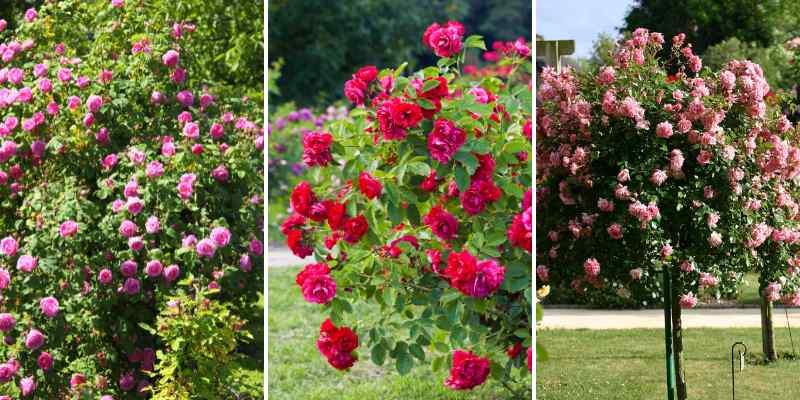
Lesson 6: Be too shy!
Adopting a timid approach to pruning your roses is an excellent way to limit their potential. By only cutting the tips of the branches, you avoid encouraging vigorous growth and abundant flowering. This method, akin to giving a light pinch rather than a proper cut, merely skims the surface of the plant's potential. Roses, thus lightly pruned, may develop an unbalanced habit and sparse flowering, as you do not sufficiently remove old wood to stimulate the growth of new, healthy, and flowering shoots.
On the other hand, a more decisive pruning, done with confidence and precision, can radically transform the health and appearance of your roses. By cutting further back on the branch, generally removing about a third to half of the total length, you encourage the plant to produce new vigorous shoots. These new shoots are often stronger and bear a greater number of buds, resulting in more abundant and spectacular flowering.
A decisive pruning also helps rejuvenate the plant. It removes old and less productive wood, thus encouraging the growth of new branches from the base of the plant. This contributes to a denser and healthier bush, with better air circulation and adequate light exposure, thereby reducing the risk of diseases.
Moreover, correct pruning helps maintain the natural shape of the rose, guiding growth in the desired direction. This is particularly important for climbing roses or those that have a specific shape to maintain.
































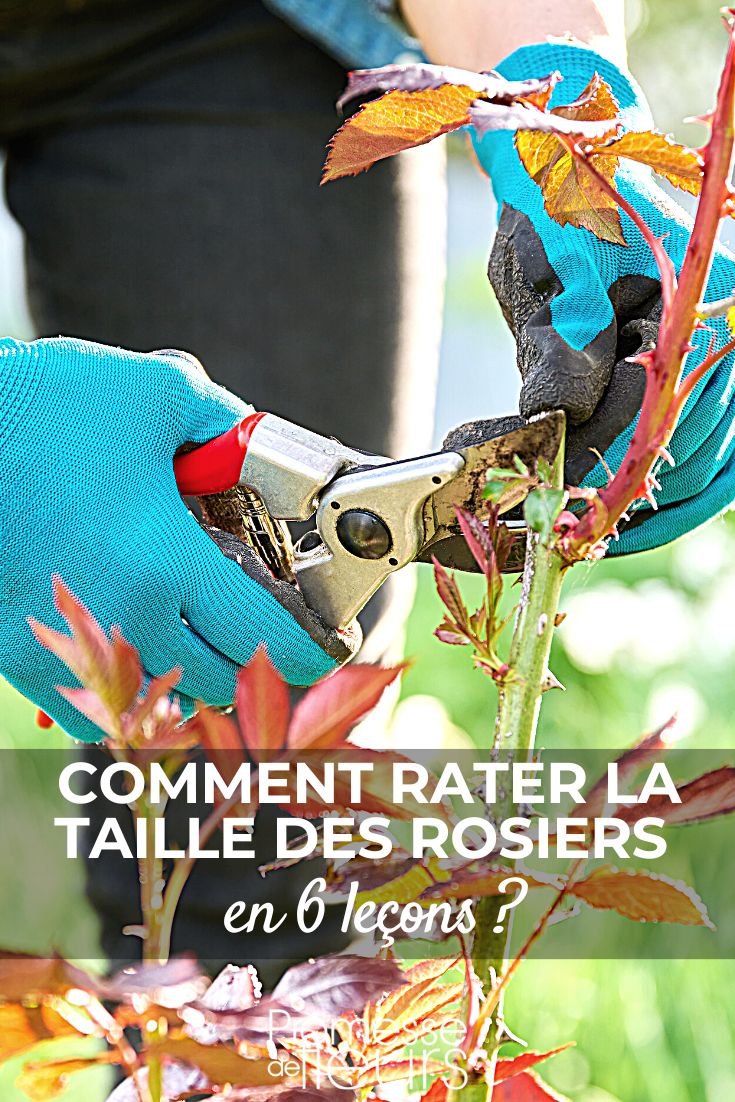
Comments